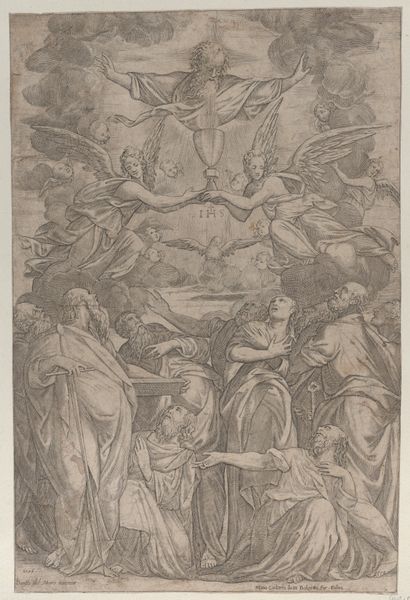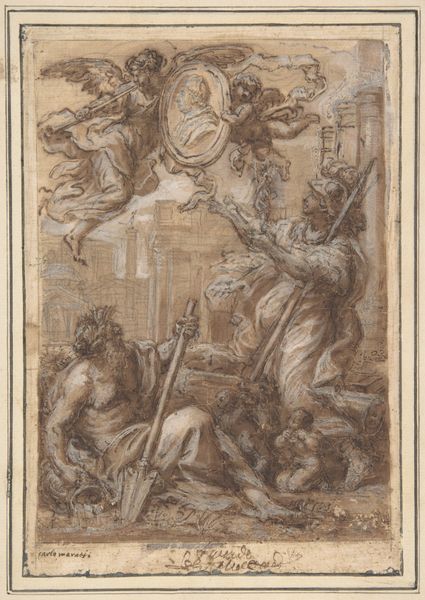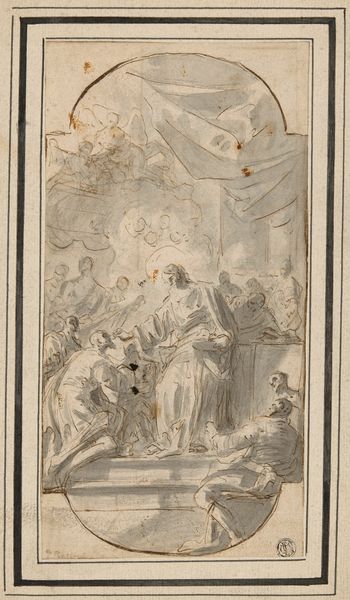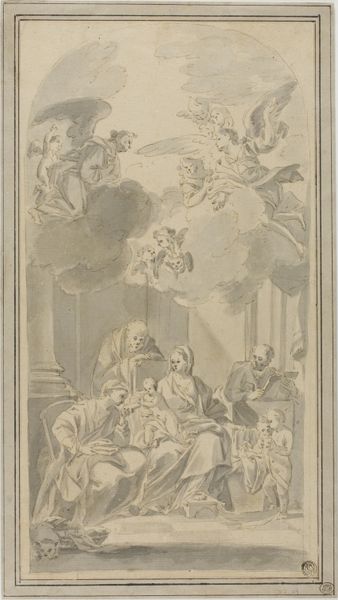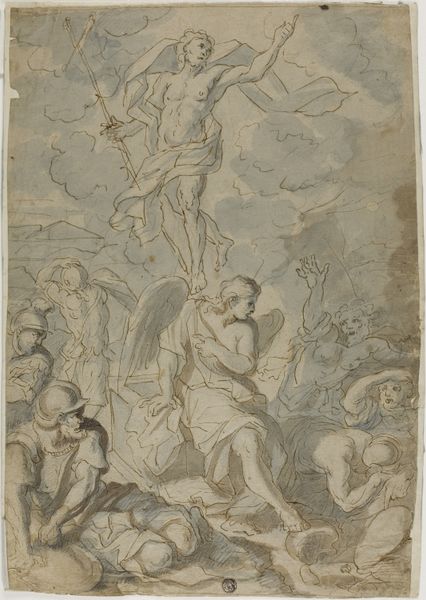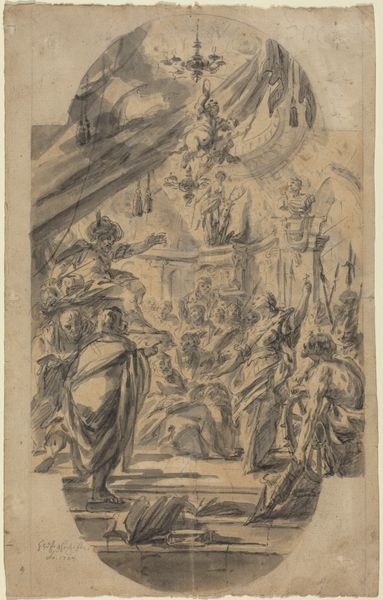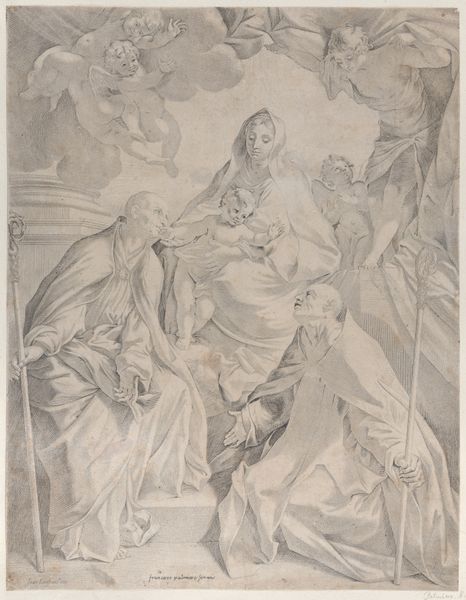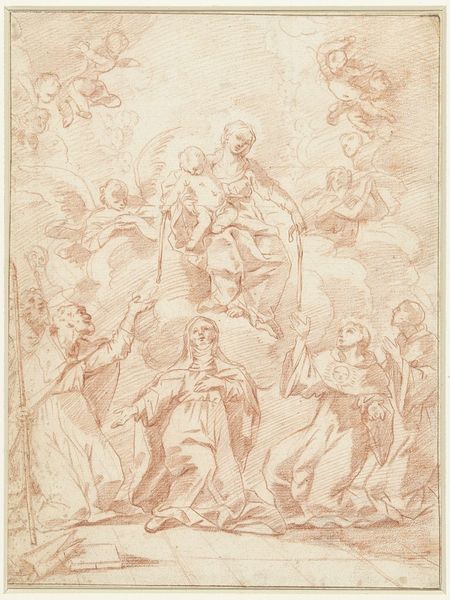
drawing, relief, paper, pen, charcoal
#
portrait
#
drawing
#
baroque
#
relief
#
charcoal drawing
#
figuration
#
paper
#
charcoal art
#
pen
#
charcoal
#
history-painting
#
italian-renaissance
Copyright: Public domain
Curator: This drawing, "Madonna and Saints" created around 1730, is attributed to Sebastiano Conca and renders in charcoal, pen and paper. Editor: The initial impact for me is how unfinished it feels, or rather, like a snapshot into a working process, with layered sketching revealing various compositional directions. The relief really lends itself to showing a dynamic group shot. Curator: The rough sketches do not obscure the importance of social hierarchy displayed through composition. Observe how Mary, at the center, presides over earthly petitioners, mediated by prominent male saints, their arrangement subtly reinforcing power dynamics. What labor and materiality support those dynamics? Editor: We’re dealing with the relatively immediate and portable media of pen, charcoal, and paper here, indicating perhaps this piece functioned as preparatory work. Think about the accessibility versus the permanence of, say, oil on canvas and its implications for patronage and display. Conca’s decision regarding drawing points to its utility as a preliminary means of production, emphasizing the role of labor in the image’s conception. Curator: Indeed. This reminds us that religious imagery like this wasn't simply divinely inspired, it was also constructed. The strategic deployment of traditional Baroque-style iconography – the swirling clouds, the gesture of blessing, all within the confines of institutional structures, which serve to communicate a very particular narrative about faith and obedience. Editor: Exactly. By highlighting materials like paper, a ubiquitous yet often overlooked component, and techniques of reproduction inherent in drawing, we gain insight into how such imagery permeated broader societal structures beyond aristocratic circles. There is more work involved in this image than divinity, you see it in the application of pen, charcoal and even how the artist chose this specific medium. Curator: Perhaps focusing on those earthly, material components helps us understand better that such heavenly visions always arrive filtered through, and in support of, earthly power. Editor: Absolutely. This analysis helps us appreciate the physical and intellectual labor that shapes these images. Thanks to focusing on process and labor, we move toward dismantling art's false romanticism and challenging traditional canons, one artwork at a time.
Comments
No comments
Be the first to comment and join the conversation on the ultimate creative platform.
